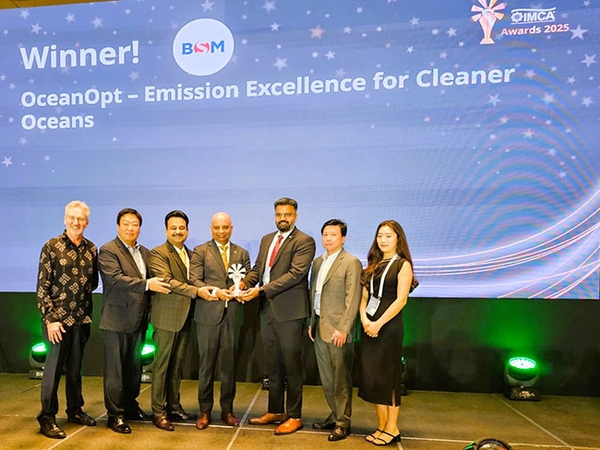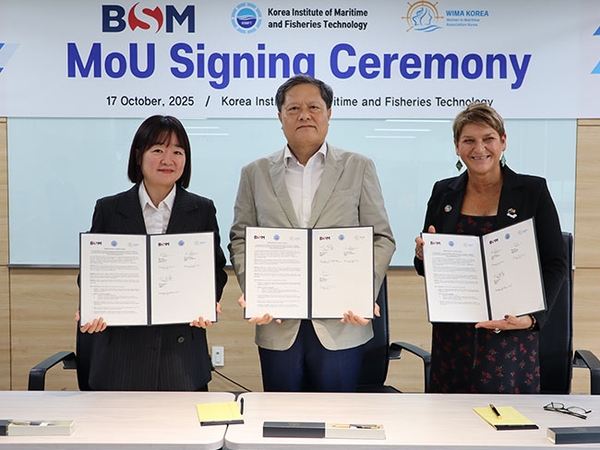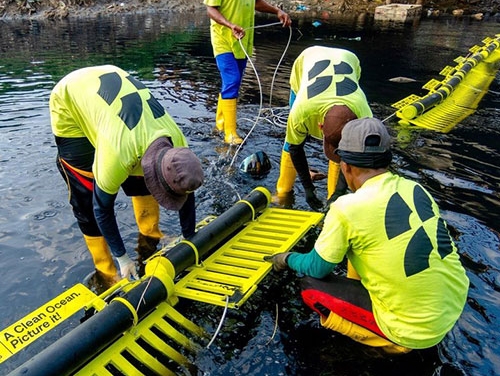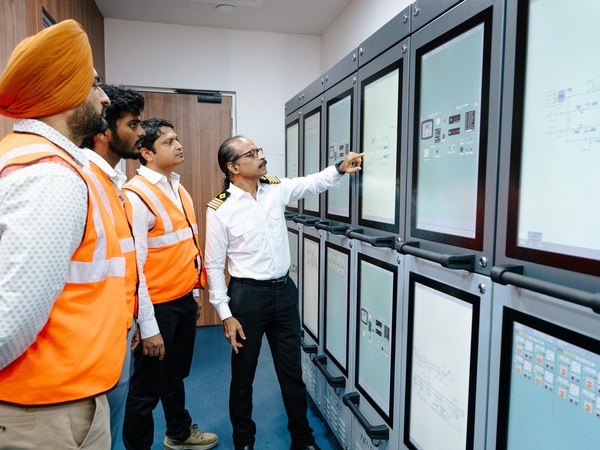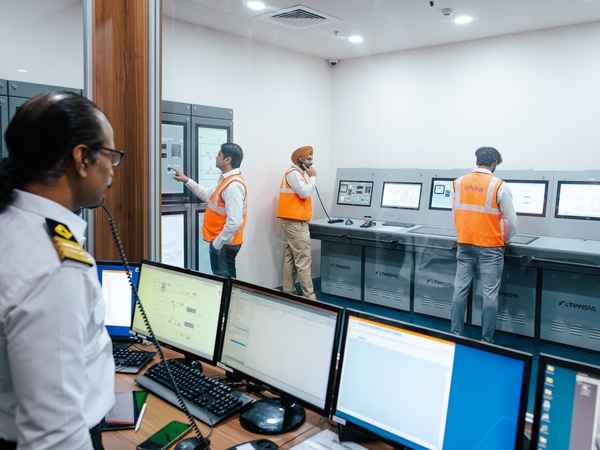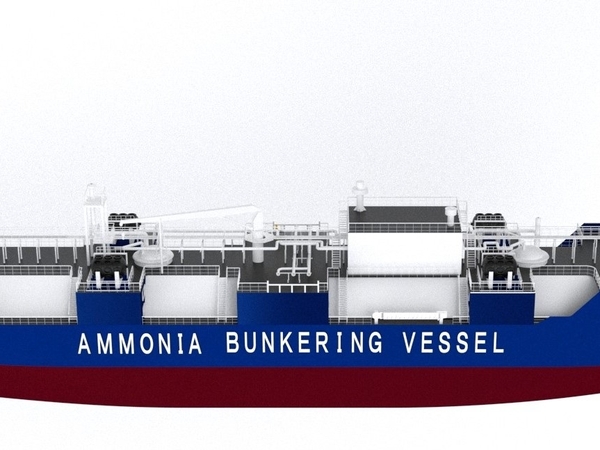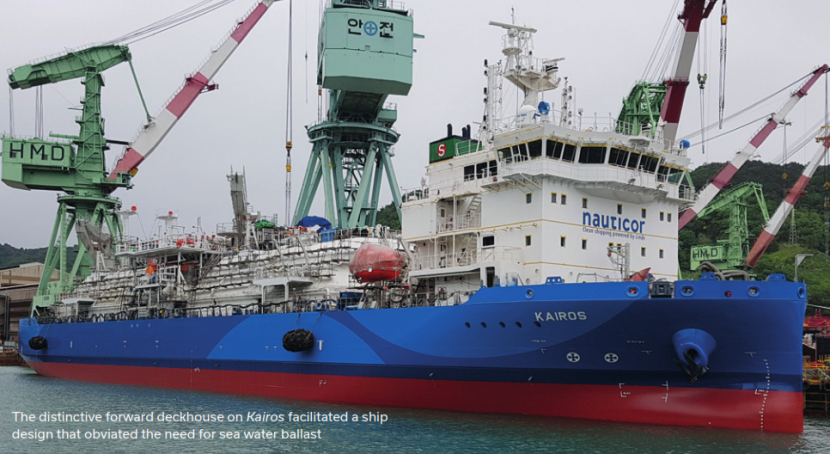
LNG World Shipping had the opportunity to ask Angus Campbell* of Bernhard Schulte and Andrew Scott* of Babcock about their new joint venture LNG bunker vessel Kairos
LNG World Shipping: We understand that Kairos will be able to function as both an LNG bunker vessel (LNGBV) and a coastal distribution tanker. Do you intend to operate the ship in both roles from the outset?
Babcock Schulte Energy (BSE): The number of LNG-fuelled ships is growing steadily. To ensure that Kairos is fully utilised as this number builds, it is likely that she will perform both roles from the outset. As a result, we developed a design capable of performing ship-to-ship (STS) bunkering and transhipment operations to allow maximum flexibility whilst in service.
BSE believes that the number of small-scale LNG opportunities will increase as transportation and industry turn to cleaner fuels. As we approach January 2020 and the new 0.5% global sulphur cap, fuel choice is important. Natural gas is a viable solution, providing a bridge between the hydrocarbon and hydrogen economies whilst new ways of decarbonising shipping are developed.
LNG World Shipping: What parameters determined the LNG-carrying capacity of 7,500 m3 and the STS transfer rate of up to 1,250 m3/hour?
BSE: The volume of 7,500 m³ was determined by considering the charterer’s required guaranteed delivery volume of LNG and the minimum sailing distance using LNG as fuel, either boil-off gas (BOG) or vaporised liquid, with sufficient heel to maintain the tanks in a cold condition ready to load the next cargo.
The transfer rate, which has a range from 60 m³/hour up to 1,250 m³/hour, achievable by a combination of different sized pumps and variable speed drive, was again determined by considering the wide range of customers that the charterer may service and the fact that for some vessels – including ferries, cruise and container ships – the time available for fuelling is limited by a strict timetable.
Andrew Scott (Babcock International Group): “By integrating Kairos’s fuel system with the cargo systems, boil-off and flash gas, which would otherwise be lost during operations, can be collected as compressed natural gas and used as fuel”
LNG World Shipping: What factors determined the choice of Wärtsilä four-stroke dual-fuel engines for the vessel and the CNG tank for returned BOG?
BSE: The Wärtsilä four-stroke dual-fuel engines were selected due to their good performance credentials and mature service history. In this new market, it will be essential to keep downtime as low as possible and to achieve this, Wärtsilä will be providing remote diagnostics and worldwide support.
Kairos’s fuel system is integrated with the cargo systems, allowing BOG and flash gas, which would otherwise be lost during operations, to be collected as compressed natural gas (CNG), and used as fuel. However, when CNG is not available, LNG can be vaporised and provided as fuel to the engines.
"Natural gas is a viable solution, providing a bridge between the hydrocarbon and hydrogen economies whilst new ways of decarbonising shipping are developed"
LNG World Shipping: How do the choices of a forward accommodation superstructure and a ballast-free arrangement interrelate? How will the choices benefit the crew and ship operations?
BSE: The forward accommodation was developed to overcome issues with forward visibility, as required by the Safety of Life at Sea (SOLAS) Convention. Moving the accommodation forward overcame the LNGBV design constraints relating to line-of-sight from the wheelhouse and also had the benefit of longitudinally balancing the ship.
Coupled with the low-density LNG cargo, this design removed the need for sea water ballast and associated treatment systems. Only a limited volume of permanent fresh water ballast is used for trim purposes.
LNG World Shipping: Please describe briefly the vessel’s manifold set-up and how this will be able to accommodate a range of terminal jetty arrangements and ship sizes.
BSE: To cater for a wide range of potential receivers, Kairos has a low-level loading/unloading manifold on the port-side, forward of midships, and a stern offloading manifold, in addition to the conventional port and starboard midships manifolds. The midships and port-side manifold will enable Kairos to load and offload at any of the current LNG terminals, floating storage and regasification units (FSRUs) or floating storage and offloading units (FSUs).
In situations where the position of the receiving ship’s bunker station and the parallel body of the receiving ship would not allow Kairos to safely moor alongside and transfer LNG from the midships transfer station, she can utilise the stern offloading station to facilitate a safe and secure mooring arrangement.
Angus Campbell (Bernhard Schulte Shipmanagement): “In addition to the conventional port and starboard midships manifolds, Kairos has a low-level manifold on the port-side, forward of midships, and a stern offloading manifold”
LNG World Shipping: We understand that BSE has developed its own proprietary cargo transfer system for Kairos. Please briefly describe the system and the factors determining the arrangement.
BSE: The objective was to produce a robust, safe and straightforward transfer system for the crew to operate, which could accommodate the variations in bunker station location and size that were anticipated on receiving ships.
The transfer system is based around liquid, vapour and nitrogen purge hoses, safely stowed and manipulated from a powered reel. The liquid and vapour hoses are each fitted with quick connect/dry disconnect (QC/DC) and powered emergency release couplings (PERC) to support efficient operation and safe emergency disconnection, respectively.
As a number of the receiving ships have the bunker station connection points inboard, the transfer system is fitted with tail piece hoses to ensure that the PERC, when activated, cannot be trapped in the bunker station. The hoses are passed to the receiving ship using the onboard knuckle boom cranes. During the transfer operation, the crane fully supports the hoses and, in the event of PERC activation, ensures that the hoses are held safely and securely.
LNG World Shipping: What is the duration of the Blue LNG charter of Kairos?
BSE: As you will appreciate, this is commercially sensitive. Following normal practice, the time charter has an initial firm period, plus a number of option periods that can be exercised by the charterer. We are working closely with Blue LNG to provide efficient service and safe operations throughout the charter period.
LNG World Shipping: Is it intended that Kairos will be the first of many LNG bunker vessels in the BSE fleet? Can you describe, in very general terms, how the key design features of Kairos may need to be altered to accommodate other LNG bunkering applications/locations?
BSE: BSE is involved in numerous potential small-scale LNG projects. The key starting point for each project is to analyse what the ship will be required to do, allowing the development of a detailed operational profile in partnership with the charterer and final recipients of the LNG. Following this, the design and capabilities of the ship can be determined.
Many potential projects require greater cargo capacity, Type C or membrane cargo containment, reliquefication or sub-cooling instead of CNG or double-hull design. As a result, design parameters will be optimised, depending on project requirements. We view this as part of the development of the nascent global LNG fuelling infrastructure, with differing customer requirements emerging and the small-scale LNG sector providing safe and appropriate solutions for each project/location.
Kairos – ship particulars
Ship name: Kairos
Shipbuilder: Hyundai Mipo Dockyard
Shipowner: Babcock Schulte Energy (BSE) (a Babcock International Group/Bernhard Schulte joint venture)
Technical manager: Bernhard Schulte Shipmanagement (BSM)
Charterer: Blue LNG (a Nauticor/Klaipedos Nafta joint venture)
Flag: Cyprus
Number of crew: 14
Ice class: 1A FS
Year built: 2018
Containment system: IMO Type C (two tanks totalling 7,500 m3)
Class: Lloyd’s Register
Intended sphere of operations: Baltic Sea
* Angus Campbell is the director energy projects at Bernhard Schulte Shipmanagement and Andrew Scott is the business development director at Babcock International Group. The delivery of Kairos is expected in the next few months.
Interview by LNG World Shipping August 2018
